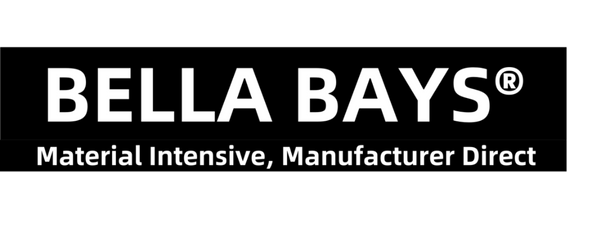
How to Install and Maintain 3/8" OD Copper Tubing
What is 3/8’’ OD copper tubing?
3/8’’ OD copper tubing is a type of tubing made from copper with an outer diameter of 3/8 inches. Its surface is smooth without seam. For this size of copper tubing, there are usually three types: Type K, Type L and Type ACR.
The thicknesses of them are shown below:
|
Types |
Nominal Size(in) |
O.D.(in) |
I.D.(in) |
Thickness(in) |
|
Type K |
1/4 |
3/8 |
0.305 |
0.035 |
|
Type L |
1/4 |
3/8 |
0.315 |
0.03 |
|
Type ACR |
|
3/8 |
|
0.031 |
Because 3/8’’ OD copper tubing is made of high quality copper material, it is resistant to high temperature, corrosion, oxidation, durability, long service life, etc. In the field of refrigeration, the tubing is good heat dissipation and refrigeration capability, high strength at low temperature. In addition, it is easier to bend than ordinary metals and has good ductility and excellent resistences of vibration, impact and frost expansion.
Therefore, 3/8’’ OD copper tubing is widely used for refrigerator, freezer and air conditioner, DIY projects, crafts, architectural models, architectural decoration, frame, industry, electrical and thermal conductivity, etc.
How to install 3/8’’ OD copper tubing?
Because of its smaller size, 3/8’’ OD copper tubing is more flexibility and efficient use of space, making it a popular choice among homeowners and professionals. So how to use it? Here are some steps for reference:
- Measure and mark the required lengthof 3/8’’ OD copper tubing for your needs, including any bends or turns in the tubing.
- Make a clean and straight cut on the tubing and then smooth out the edges of the cut tubing. For this you need a tubing cutter and a deburring tool to finish the job. This step can make a good fit with the fittings to prevent any leaks.

- Assemble the cut tubing and fittings. Before you slide the fittings onto the cut tubing, you need to apply a small amount of copper adhesive to the inside of the fittings. The copper adhesive is used to seal any space between the cut tubing and the fittings.
- Apply heat on the area around the fittings. The copper adhesive will be melted and then allow it to cool and set. So it can create a strong bond between the cutting tubing and the fittings.
- Check for any leaks by applying water to test. If any leaks are found, use the copper adhesive to seal them again.

Soldered connections are still preferred method of fitting copper tubing in most cases. Except the soldered connections, there are also some of the most connection methods.
Pro-Set or Clamp-on Fittings: These fittings are pre-made and have an o-ring inside.
Push-on Fittings: These fittings have an o-ring and a stainless steel ring with angled teeth.
Compression Fittings: these fittings work by compressing a small brass ring between the fitting and a nut.
In addition, it is often necessary to bend the copper tubing when installing. So how to bend a piece of 3/8’’ OD copper tubing? Here are two common methods.

- Use a pipe bending tool
It’s easy to bend a piece of copper tubing as you want with a small pipe bender.
- Use a spring to bend the copper tubing
Tube-bending springs can act as support to better distribute the force.

How to maintain the copper tubing?
To maintain the 3/8’’ OD copper tubing, please check regularly for any leaks or damage.
The method to maintain the copper tubing includes the following steps and operating procedures:
(1) Cleaning the copper tubing. Clean the surface of the copper tube with mild detergent and warm water. Use a soft cloth or sponge to gently wipe to ensure the removal of dirt and dust. Please don’t use sanding or brushes to clean the copper tubing, avoiding scratching the surface of the copper tubing.
(2) Removing oxides. Use acetic acid or lemon juice to clean oxides or rust on the surface of the copper tubing. Apply acetic acid or lemon juice onto the copper tubing, then wipe it with a soft cloth until the oxide is completely removed.
(3) Preventing corrosion. Use specialized preservatives or lubricants to prevent corrosion of the copper tubing.

(4) Regular inspections. Regularly inspect the copper tubing to ensure its integrity and no leakage. Pay attention to any abnormal signs of water leakage or corrosion on the surface of the copper tubing. Repair or replace the damaged the copper tubing as soon as possible if any problems are found.

(5) Paying attention to temperature changes. The copper tubing is sensitive to temperature changes, especially during cooling and heating processes. Ensure that the copper tubing can withstand the required temperature range and avoid damage to the copper tubing caused by too high or low temperatures.
(6) Regular maintenance. Perform regular maintenance including cleaning and inspecting copper tubing to ensure its normal operation. If needed, invite professionals to conduct more in-depth inspections and maintenance work to ensure the reliability and performance of the copper pipe system.
(7) Using protective covers. Install a protective cover on the copper tubing of the outdoor unit. And this can effectively prevent the impact of sunlight and rainwater infiltration, reducing the problem of surface rust and corrosion of the copper tubing.
In summary, the specific maintenance methods may be changed depending on different using situations and the applications of the copper tubing. Before carrying out any maintenance operations, it is recommended to consult the relevant manufacturer's guidelines or consult professionals to ensure that maintenance is carried out according to the correct methods and steps.

Leave a comment